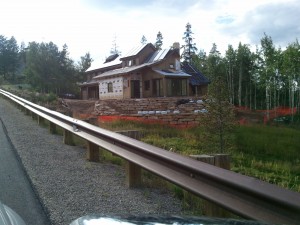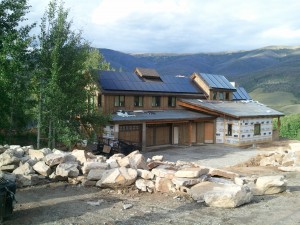Month: September 2011
How Many Ad Impressions Should I Buy?
 It’s a common question and I’m sure there are some people that would say, “All of them!” Just like with print advertising, too few impressions won’t give you the impact you need. One business card ad in your local paper won’t give you the same bang as a full page spread. Conversely too many impressions can be overkill. Do you really need a full spread, every month to be noticed and convey your message? Probably not.
It’s a common question and I’m sure there are some people that would say, “All of them!” Just like with print advertising, too few impressions won’t give you the impact you need. One business card ad in your local paper won’t give you the same bang as a full page spread. Conversely too many impressions can be overkill. Do you really need a full spread, every month to be noticed and convey your message? Probably not.
At BDX we won’t sell a builder more than 30% Share of Voice (SOV) or 30% of total impressions per market. At that level a builder is guaranteed to appear on every page above and below the fold and from the data we’ve seen even at this volume campaigns still perform well. Meaning that performance at 15% is the same as at 30% but with just fewer clicks…
Shortening the Ad Window To Improve Performance
However, we have seen performance suffer on campaigns with too small a SOV if not properly managed. For the BDX that means shortening the window on our smaller buys. We’ve found that we can drive more clicks for our smaller buys by reducing the advertising window to 15-20 days instead of a full 30. It equates to more impressions per user and stronger performance overall.
The Impact of Good Creative
I’ve consistently seen that creative is the strongest driver of performance and even a small campaign can perform well. Once you’ve established the right site and the right message it’s easy to scale.
In Summary – Focus On Frequency
With the right site, high frequency appears to be the right move. We’ve seen a similar trend in our retargeting and the performance of our VAN advertisers (who advertise across a network of vetted real estate websites). Our retargeting audience is self-qualified and we’ve seen high frequency against narrow windows have very positive results. Builder advertisers on the VAN are successful because in addition to a large SOV these ads reinforce the builder’s listings on those websites which also improves conversion.
For me when testing new sites I think you can learn a lot in a one month flight and a strong SOV. In the end you’ll know where you stand or if you need to tweak your message. I recently heard of a builder who will cut the number of websites they advertise on by 70% in 2012 choosing to focus on those few that drive the greatest value.
If you have questions about marketing strategies or advertising with BDX contact Thane Tennison, Advertising Manager for the BDX Network.
Tim Costello to Deliver Keynote At Annual CEDIA Expo
 This Friday, BDX CEO Tim Costello will be delivering the Keynote presentation at the annual CEDIA Expo. His presentation will focus on the “new normal” and how companies can find opportunities to thrive in this new economic landscape.
This Friday, BDX CEO Tim Costello will be delivering the Keynote presentation at the annual CEDIA Expo. His presentation will focus on the “new normal” and how companies can find opportunities to thrive in this new economic landscape.
Mr. Costello will also be presenting two educational sessions during the conference:
Applying Lean Principles to Achieve Operational Excellence :: This session will examine how successful businesses have created disciplined programs of waste elimination and provide attendees with a firsthand consultation for establishing a plan of their own.
Marketing to the New Green Buyer :: There’s a lot of talk about the green consumer these days, but selling to the new green buyer may be more complex than you thought. This session introduces attendees to the different buyers within the green market and how to appeal to each of them.
Selling New Homes In An Over-Saturated Market
Blog Post From Tim Costello: CEO, Builders Digital Experience
I was visiting Summit County, Colorado a few weeks ago. While it may not be Las Vegas or Riverside, CA, the market is in a slump none-the-less. It is plagued by the same components of housing malaise as the rest of the nation — too many homes for sale, foreclosures, short sales and just not enough well-heeled buyers to keep things going. Prices have declined dramatically and inventories remain relatively high.
Yet as I rounded the corner of yet another high-end community with For Sale signs on what seemed to be a quarter of the properties, a new home under construction came into plain view. It was so shocking; I had trouble comprehending what I was seeing, kind of like seeing an elephant in the middle of a highway. But there it was a bustling site of activity reminiscent of the pre bubble economy.
At first, I wondered if it was some builder’s final desperate folly. But then as I stared at it and studied the home, the genius of it all began to sink in. This was not just another house, this was a “new home”, highly differentiated and with features that are completely unavailable on the current market. This was not only the only home of its type in the neighborhood but one of only a few such homes in the entire county. This home was “green” from the ground up, with solar PV and hot water to boot. This builder was not building another house; he was building the first house of its kind.
And therein lies the genius of it all, if your market is saturated and demand is slack then change your offering to create your own “blue ocean” strategy, where you compete alone and harbor all demand. The building industry has a unique and compelling advantage to other industries, in that we do not build standard products. Of all the industries I have studied over the years, homebuilding has the most latitude to course correct and change its offering year to year and even month to month.
If the home building industry wants to regain its momentum without waiting for “absorption economics” to play out, then it had better change the game. Go back to the drawing board and build a product that does not compete with the current market. Borrow a card from the auto industry and create planned obsolescence to drive demand and create profound differentiation. The future of the housing market may depend on it and the country as well as consumers will certainly benefit from it.


